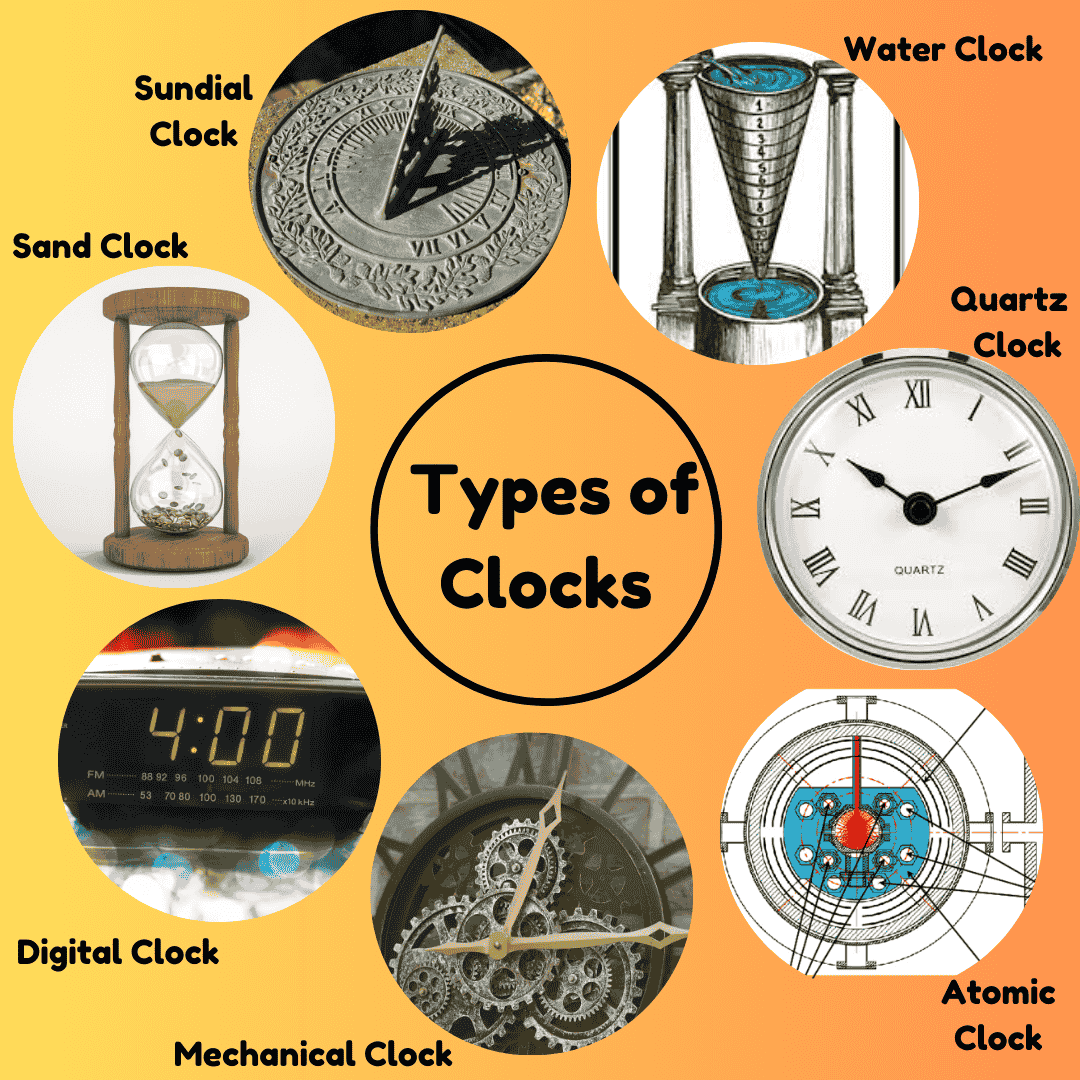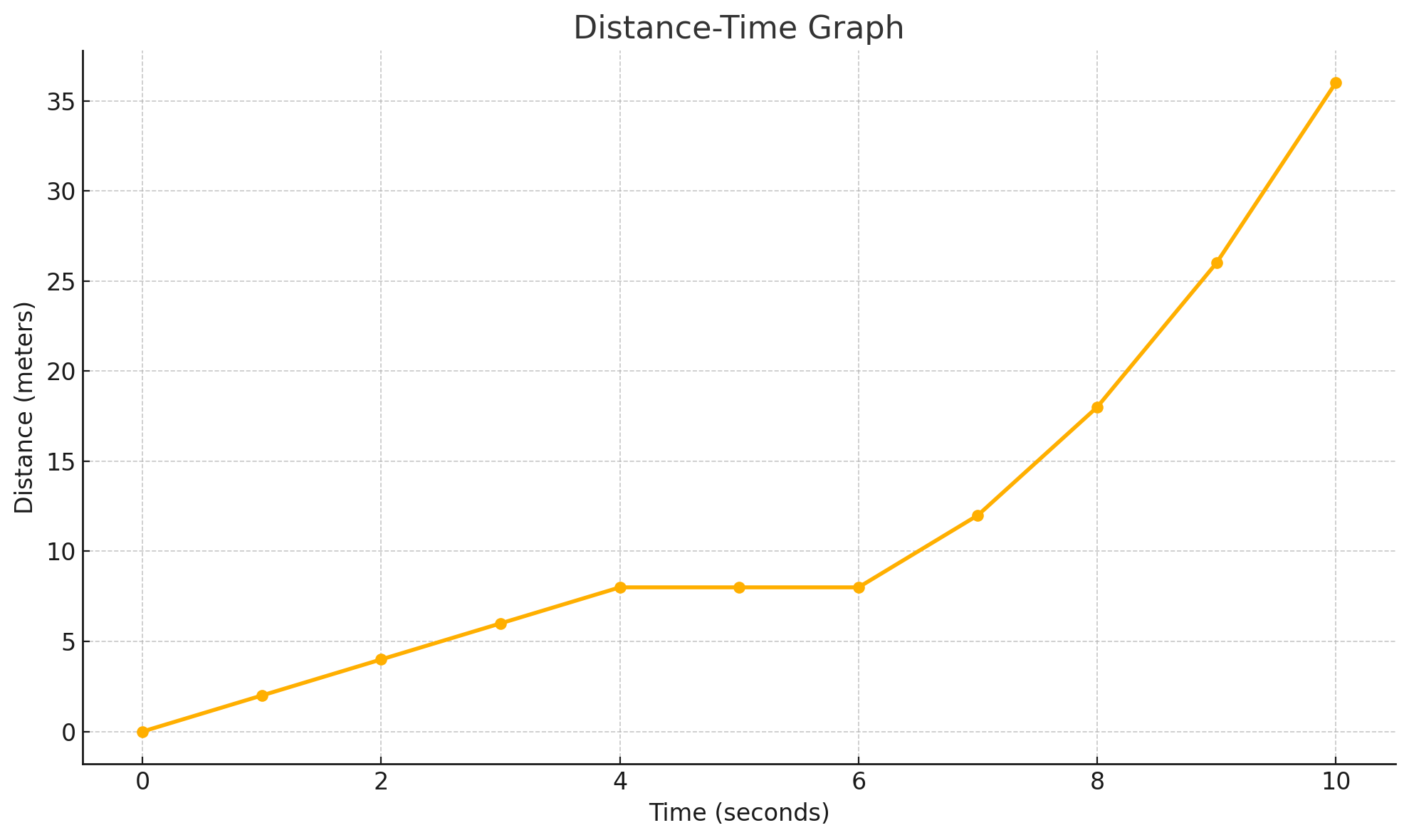Motion and Time for Class 7
Motion and Time: Introduction
Let's start with one of the most fundamental concepts in physics: motion and time. Whether walking or orbiting around the sun, motion and time are two essential parts of life. A body is said to be in motion if it changes position concerning time. While the latter measures the length of an event, time performs the reverse. Motion and time aren’t only studied in the lab; they also exist in life, to track the position of the stars and planets and the rate at which a car travels down a road.
Fun fact: The fastest recorded speed of a human is 44.72 km/h (27.8 mph) speed Usain Bolt from 2009.
What Do You Mean by Rest and Motion?
An object is said to be at rest if it does not change its position concerning some fixed point in the space.
Real-Life Examples:
-
A table resting on a table.
-
If a car is moving, it has to be moving relative to the environment.
-
The hands of a clock are in motion as they continuously change their positions.
-
A bicycle that is not in use is at rest, and a bicycle being used is in motion.
Measurement
To measure is to compare an unknown quantity with a known standard. This makes the measurements of motion and time consistent (ranges are measured in standard units)
Units of Measurement
|
Quantity |
SI Unit |
|
Distance |
Meter (m) |
|
Time |
Second (s) |
|
Speed |
Meter per second (m/s) |
|
Velocity |
Meter per second (m/s) |
Real-Life Examples:
-
Distance (in kilometres) between the two cities.
-
Stop Watch: The time taken by a runner to complete the race is measured by stopwatch.
-
The speed gauge of a car measures speed in kilometers per hour (km/h).
Fun Fact: The speed of light is approximately 299,792,458 m/s.
Time
Besides providing a way to sequence events, to compare the durations of events that happen at a separable place, or to compare the motion of the same object between different times, time is a fundamental quantity in physics. Various implementations of clocks are used to measure it.
Different Types of Clocks

Types of Clocks
1. Sundial: Measures time using the position of the utilized shadow.
For example, sundials to tell the time of day back in ancient civilisations.
2. Water Clock: A water clock uses the action or flow of water to measure time.
For example, the ancient Greeks and Egyptians utilized water clocks.
3. Sand Clock: Measures time by the consistent flow of sand.
For example, hourglasses are still used in board games.
4. Mechanical Clock: Gears and springs are used to keep track of the time.
5. Quartz Clock: Measures time accurately through vibrations in quartz crystals.
6. Digital Clock: Displays time in numerical format using electronic circuits.
7. Atomic Clock: The most accurate of timekeepers, it uses the vibrations of atoms.
Fun Fact: Atomic clocks are so accurate that they would lose one second in millions of years.
Simple Pendulum
A simple pendulum is a string with a bob attached at one end and the other end left free to swing back and forth. This time to perform an oscillation is called the time period.
Real-Life Examples:
-
A pendulum is used to keep time.
-
A child on a swing moves like a pendulum.
Fun Fact: Before quartz clocks and atomic clocks were developed, a pendulum clock was one of the most accurate time-measuring devices.
Distance and Displacement
Distance: The total path covered by an object.
Displacement: The minimum linear distance between the origin and the destination.
Real-Life Examples:
For example, if one walks around a park and returns to the original point, the distance covered is the whole way, but the displacement is zero.
|
Comparison |
Distance |
Displacement |
|
Definition |
Total path length |
Shortest straight-line distance |
|
Scalar/Vector |
Scalar |
Vector |
|
Can it be zero? |
No |
Yes |
Fun Fact: If a person walks 10 meters forward and then 10 meters back, the total distance is 20 meters, but the displacement is 0 meters.
Speed
Speed, after all, is the rate of distance change per unit interval of time.
Speed = Distance/Time
Real-Life Examples:
The speed of a car is said to be 60 km/h, which means that the car can cover 60 km or 60 km (inverse) in one hour.
What is Uniform and Non-uniform motion?
Uniform Motion: You can say this if an object is moved equal distances in equal intervals of time.
Non-Uniform Motion: An object that travels unequal distances in equal time intervals.
|
Type of Motion |
Definition |
|
Uniform Motion |
Equal distances in equal time |
|
Non-Uniform Motion |
Unequal distances in equal time |
Fun Fact: Earth’s rotation is almost uniform, but small variations can occur due to geological activities.
Graphs
Graphs are a visual representation of motion. The distance versus time graph is used most often to study motion.
Distance-Time Graphs
-
A straight line means constant speed (uniform motion).
-
If a motion is non-uniform, the line will be curved.

From the above graph:
1. Uniform motion from 0 to 4 seconds (distance increases at a constant rate)
2. Stationary phase from 4 to 6 seconds (no change in distance)
3. Accelerated motion from 6 to 10 seconds (distance increases at a faster rate)
Fun fact: Motion graphs are used by astronomers to study how planets and stars move.
Velocity
Velocity is the rate of change of an object in a particular direction.
Velocity = Displacement/Time
The speed of sound in air is roughly 343 m/s, but it is significantly faster in water and solids.
We learn that motion and the concept of time are key to scientific principles and practical uses both for scientists and for daily life. The study of motion and time is important in physics, from measuring speed to analysing the motion of objects.
Things you have learned!
- Motion is defined as a change in position of an object with time.
- There are various types of clocks for measuring time.
- Speed and velocity tell us how fast something is moving.
- This is the basis of distance-time graphs.
- Constant and Variable Speeds Uniform and non-uniform motion

